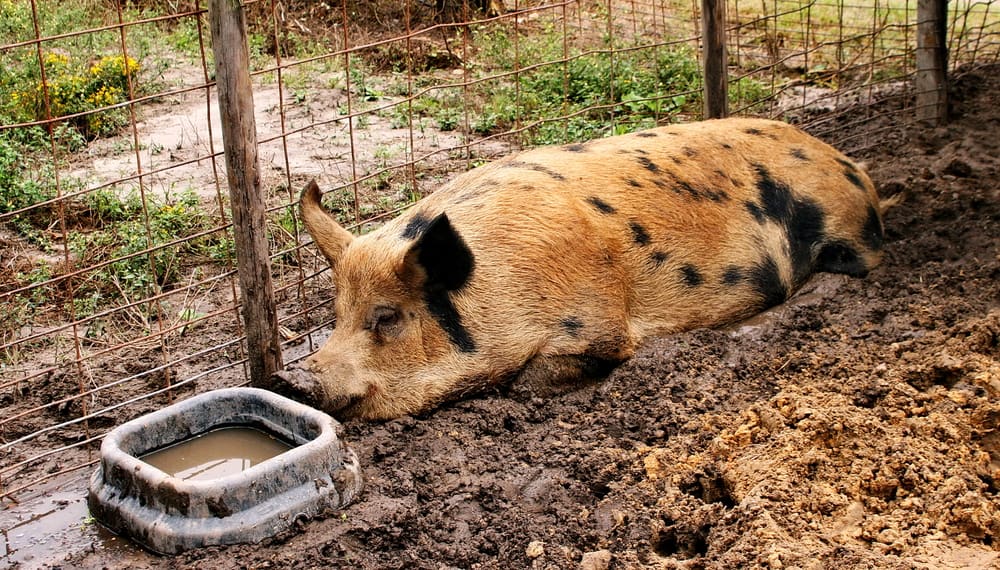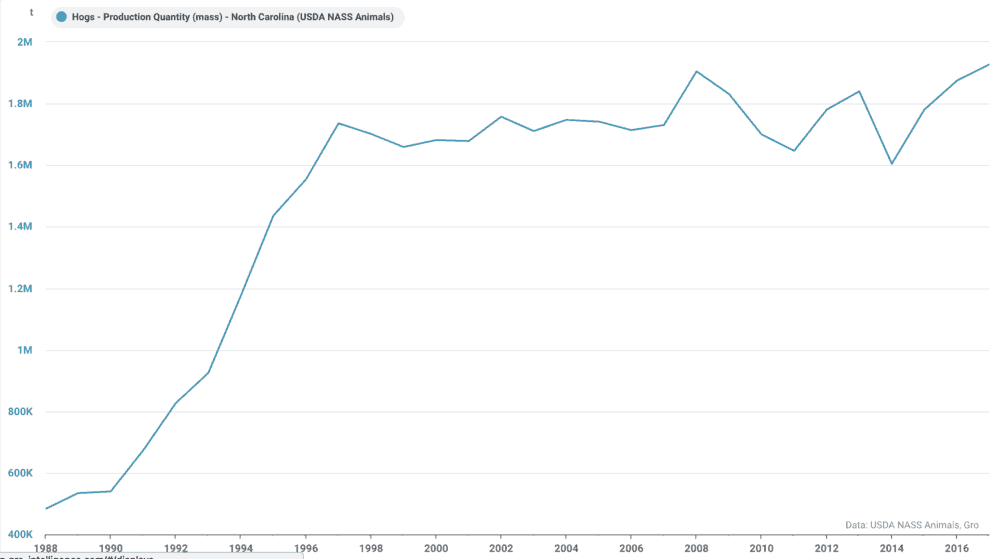
Hurricane Florence made landfall in North Carolina as a Category 1 storm as its wind speed dropped, sparing many buildings, trees, and power lines from the more extensive wind damage of a major hurricane. Still, Florence’s slow pace across the state dumped massive amounts of rain onto North Carolina, with localized totals around Wilmington exceeding 40 inches.
Floodwaters damaged critical commodity infrastructure in a number of sectors, from Duke Energy’s (NYSE: DUK) coal ash deposits, which were partially washed into the Cape Fear River watershed, to hog waste lagoons. The word ‘lagoon’ is a bit of a euphemism to describe where the feces from North Carolina’s roughly 8.9M pigs end up: in about 4,000 open-air pits dotting the eastern portion of the state. The only practical measure hog farmers can do to avoid lagoon breaches is preemptively spraying hog waste on fields outside the lagoons, fields about to receive near-record rainfalls.
The North Carolina governor’s office pushed back against clean water advocates’ concerns about uncontained toxic hog waste, saying that the farms had suffered no substantial damage. Meanwhile, the NC Department of Environmental Quality Secretary Michael Regan said today that a hog lagoon in Duplin County had breached, and that at least seven others have overflowed.

Lean hog futures contracts (HEZ18) have gained 15% since August 30th, up to 55.38 cts per pound. Also affecting the supply side, is China’s outbreak of African Swine Fever, but there’s still very little visibility into how severe the problem is and how many hogs will have to be culled. The history of the North Carolina hog industry is somewhat surprising: in 1988, about 480,000 hogs were produced, but by 1998, over 1.7M hogs were produced in North Carolina. Since then, hog production has remained in the 1.6M-2M range. The 1990s saw a period of rapid consolidation in hog farming, specifically the shift from small, multi-enterprise crop/livestock farms to indoor, industrial operations concentrated in the southern coastal region of the state.

Among U.S. states, North Carolina produces the second-highest number of hogs per year. Lean hog futures crashed 25% in July when China, the world’s largest consumer of pork, placed tariffs on American pork, and have been volatile ever since, posting gains of 20% and then shedding them just in the month of August.










